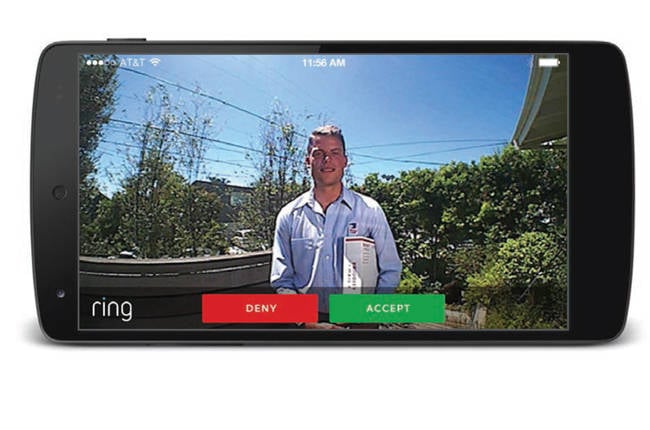This article is more than 1 year old
Ding-dong, the cloud calling: The Ring Video Doorbell
A $200 security system that links to your mobe
Put a Ring on it?
There are many reasons why you should get the Ring doorbell and not that many why not.
One reason why not is that you don't think you need it, or $200 seems a bit pricey. Another is if you live in an apartment building, especially one with its own system. And a third is if you don't have a smartphone.
Apart from that, this is a smart-tech product that hits all the right buttons: it works, it is incredible useful, it doesn’t require much effort on your part, and it actually makes your life easier.

The company behind Ring has closely observed the Nest thermostat, even down to the packaging. The Nest comes with its own little Nest screwdriver: the Ring takes that a step further with a little tool pouch that includes a drill bit, a USB charging cable, caulk and a tiny spirit level.
The Ring also does its best to be an upgrade to your existing doorbell, just as the Nest replaces and improves your existing thermostat. It can be easily fixed to your front door, just like a normal doorbell. It is battery powered. It connects to your existing wiring (if you have it). A lot of thought and engineering has gone into the Ring and it shows.
The Ring is not the Nest of doorbells though - not yet. The Nest is remarkable in that the people behind it spent years and millions of dollars on it before they even showed it in public. Oh, to have such resources. The Ring is on the right path however.
There are all sorts of things that we would love to see in the next version of Ring but the reality is that what exists right now is worth your money.
What you get
For $199 you get an awful lot in the Ring: an HD camera, a good quality intercom, variable motion detection split into multiple zones, an actual doorbell and the really useful add-on: a link to your smartphone that lets you answer the Ring and see instant video, as well as communicate verbally with the person at the other end.
The biggest issue we had wasn't fixing it to the door frame (basic DIY, five minutes); it wasn't connecting it up to the wireless (basic, simple walk through, five minutes) and it wasn't in the functioning of the device. It was time delay.
From picking up motion/pressing the button on the Ring, there was a 10-second delay until the moment the person could hear your voice. The delay in getting notification to the phone was around 5 seconds, then you have to open the app and hit Accept, and then you speak – and that came with its own delay. Those 10 seconds made the product basically unusable, which was a serious disappointment because it all worked so well otherwise.
The reason, we quickly discerned, was a weak WiFi signal at the door itself. In most houses, there is no need to have decent wireless at the door. The result was a lengthy delay. However, after shifting the router and redirecting the antennae, this delay dropped down to around 1-2 seconds and suddenly the Ring starts looking like a really very good videophone and intercom for very little money.
This delay has also been mentioned by a number of other reviews of the Ring, so we spoke to the company's CEO Jamie Siminoff about it. "Well, if you’re getting 10 seconds delay then that is going to make it unusable and we would refund you your money," he tells us straight off. "But I can tell you that on average our customers get one to two seconds delay – which they seem happy with."
We briefly discuss the fact that in the modern world, there is an increasing need for high-quality WiFi to every part of your house, including its surroundings. "I reckon it will be a good business, I'd take a look at it if we were so focused on the Ring right now."
But more importantly, the company is working on doing what it can to improve the issue without requiring customers to move their routers.
"We already have several software updates in the pipeline that will help with this. We're currently testing them." The issue with those with weak WiFi at the door is that the device currently tries to send HD video to the device as fast as it can. That can cause a delay. "We're changing that so it pings your device first and then brings in the video," Siminoff tells us. "And while we do have variable bit rates, we're working on how we can improve that so people get the video faster."
It is worth noting that the video quality – when you get it – is excellent and above almost all the Ring's competitors. It also has night vision.
